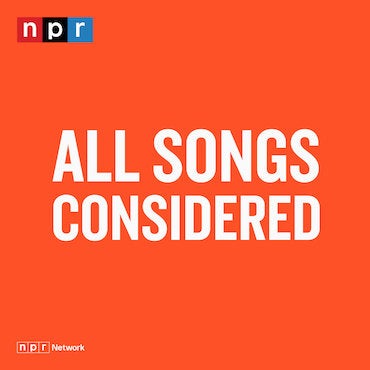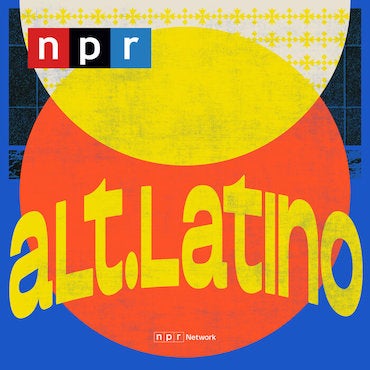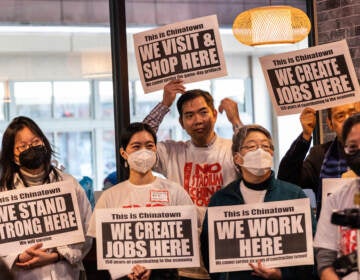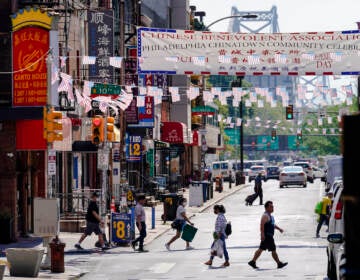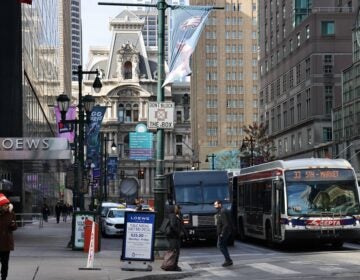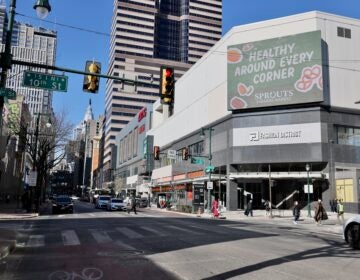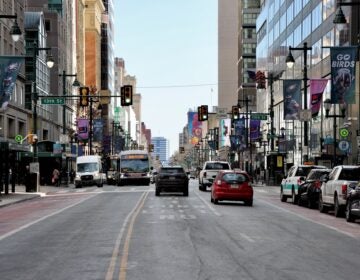‘A little undercooked’: Sixers arena plan gets another icy reception from design panel
Nearly 50 people weighed in during the all-day hearing. The overwhelming majority had lingering concerns with the team’s updated plan.
Listen 0:58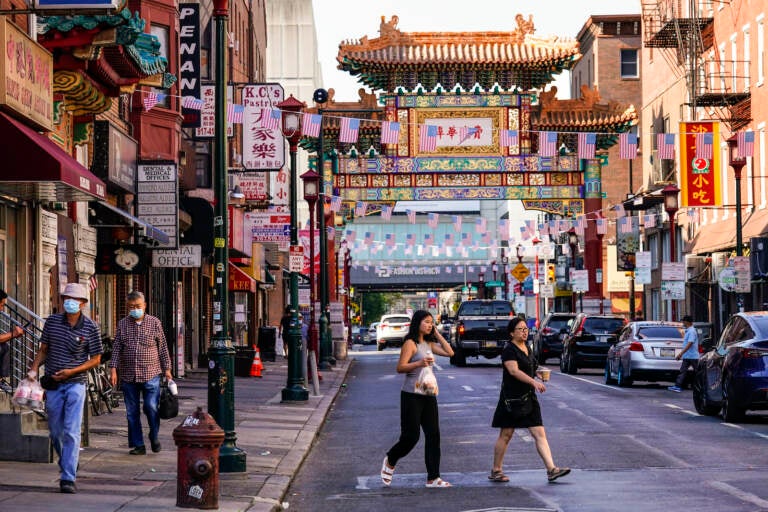
Pedestrians cross 10th Street in the Chinatown neighborhood of Philadelphia on July 22, 2022. (AP Photo/Matt Rourke, File)
Sixers arena
- The 76ers have proposed moving to a new $1.55 billion arena near Chinatown called “76 Place”
- The proposal has drawn swift condemnation, excitement, skepticism — and plenty of buzz
- Black Clergy of Philadelphia has endorsed the project, while a majority of Chinatown businesses and other community members have voiced their opposition
- Amid competing interests, the arena’s future remains uncertain
It will be at least “several” more weeks before the city releases a pair of impact studies commissioned to help guide officials weighing the value of building a new Sixers arena in Center City.
Martine Decamp, interim executive director of the Philadelphia City Planning Commission, said Tuesday that the highly anticipated analyses are still being finalized. She also said the studies need to be translated into multiple languages before they are released to the public, further extending the timeline for sharing the findings.
“It’s hard to give a final date,” Decamp said. “We’re getting closer and closer.”
Decamp’s comments came during the second and final city review of a draft “master plan” for the $1.55 billion project. The marathon hearing was held as stakeholders eagerly await the studies’ results, which will evaluate the privately funded arena’s community and economic impacts.
The studies were expected by the end of December. The city then announced the results would not be released until after the new year. Three months later, there is still no timeline for the release, making it unclear when any enabling legislation might be introduced in City Council.
“The deadline keeps getting pushed back because they’re very complicated studies and issues,” Decamp said.
City Councilmember Mark Squilla, whose district includes the proposed arena site, has said the impact studies will inform his decision to introduce enabling legislation for the project. He has also promised to share any legislation with community stakeholders at least 30 days before possible introduction.
The massive development cannot proceed without zoning approvals. The Sixers hope to start vertical construction in 2028 and open the new arena in 2031, the same year its lease expires at the Wells Fargo Center in South Philadelphia.
“If we are moving forward, [introduction] could possibly be in June but not sure,” said Squilla in an email.
Council’s last session before summer recess is June 13.
A ‘building block’
The Sixers want to build an 18,500-seat arena on Market Street between 10th and 11th streets, on top of SEPTA’s Jefferson Station near the edge of Chinatown. The mixed-use development, which includes ground-floor retail and a 395-unit apartment building, would replace a third of the struggling Fashion District mall.
In December, 76 Devcorp, the team’s development arm, and architecture firm Gensler presented a “master plan” for the project to the city’s Civic Design Review committee. The advisory group, composed of architects and planners, provides feedback on proposed developments early in the approvals process. While developers are not required to adopt the committee’s recommendations, they are strongly encouraged to incorporate them into their designs before finalizing them.
On Tuesday, the group presented the team’s changes to the plan in response to concerns raised during last year’s meeting. The long list covered issues pertaining to vehicle and pedestrian traffic, the flow of fans in and out of the arena, the vibrancy of the facility’s ground floor, and the team’s plans for activating the arena on non-event days.
The arena is expected to host 150 events a year, including at least 41 regular season home games.
“We really view the arena as a building block to a vibrant and mixed-use area. But it’s not the only solution and we’ve never said that. But we think it can and should be a piece of the puzzle and with our private investment, it would help spur additional economic activity,” said Alex Kafenbaum, head of development for Harris Blitzer Sports & Entertainment, which owns the Sixers.
The team’s plan now calls for more than a dozen commercial spaces — more than double what it initially envisioned. The latest iteration also includes areas for community events, more outdoor space for fans waiting to get into the arena and a revised entryway designed to let more light into Jefferson Station.
Developers initially said both lanes of 10th and 11th streets would need to be closed before and after events for crowd control. The plan now proposes shutting down just one lane of traffic on those blocks and only after events for about an hour. The concept has not been approved by any city agencies.
The team expects 40% of event-goers to drive to the arena and 40% to use public transportation. The rest would arrive by foot, taxi or rideshare, or another mode of transportation.
Kafenbaum assured the committee that pedestrian and vehicle traffic will not overload the streets on event days. “The city already does and can handle this level of volume,” he said.
Mixed reviews
Unlike the first hearing, not all of the feedback was critical. However, committee members remained unimpressed with the team’s proposal.
“This is a little undercooked,” said Dan Garofalo, vice chair of the CDR committee.
“We’re just not there yet,” added Michael Johns, who leads the panel.
Nearly 50 members of the public weighed in during the all-day hearing. The overwhelming majority of them also had concerns with the team’s updated plan. They questioned the veracity of the traffic data presented during the hearing, the team’s need to leave the stadium district and its argument that the arena will be a change agent for East Market Street, a corridor that has failed to thrive for decades.
Residents also admonished the team for seemingly downplaying the impact the arena could have on residents and businesses in surrounding neighborhoods, including Chinatown, Washington Square West and Old City. Residents and businesses in Chinatown, which sits just outside the arena’s footprint, fear the development will destroy the ethnic enclave.
“We’ve seen lots of changes over the years, but no threats as stupid or careless as this arena plan. I know the applicants think they’re doing a good job and, I get it, they have a boss to answer to. But for us, this is a literal fight for our survival,” said Katy DiSanto, who works at a small business in Chinatown.
A handful of people, including Robert Ziegler, argued that the project would have a positive impact on the city. He said there are downtown arenas around the world and a similar development can also work in Philadelphia.
“The reflexive pushback that it can’t is disappointing,” said Ziegler. “I hope we don’t let the traditional negative Philadelphia stereotypes surrounding parking and traffic hold back a project that I think could inject some life into a part of the city that could really benefit from it.”

Subscribe to PlanPhilly
WHYY is your source for fact-based, in-depth journalism and information. As a nonprofit organization, we rely on financial support from readers like you. Please give today.
